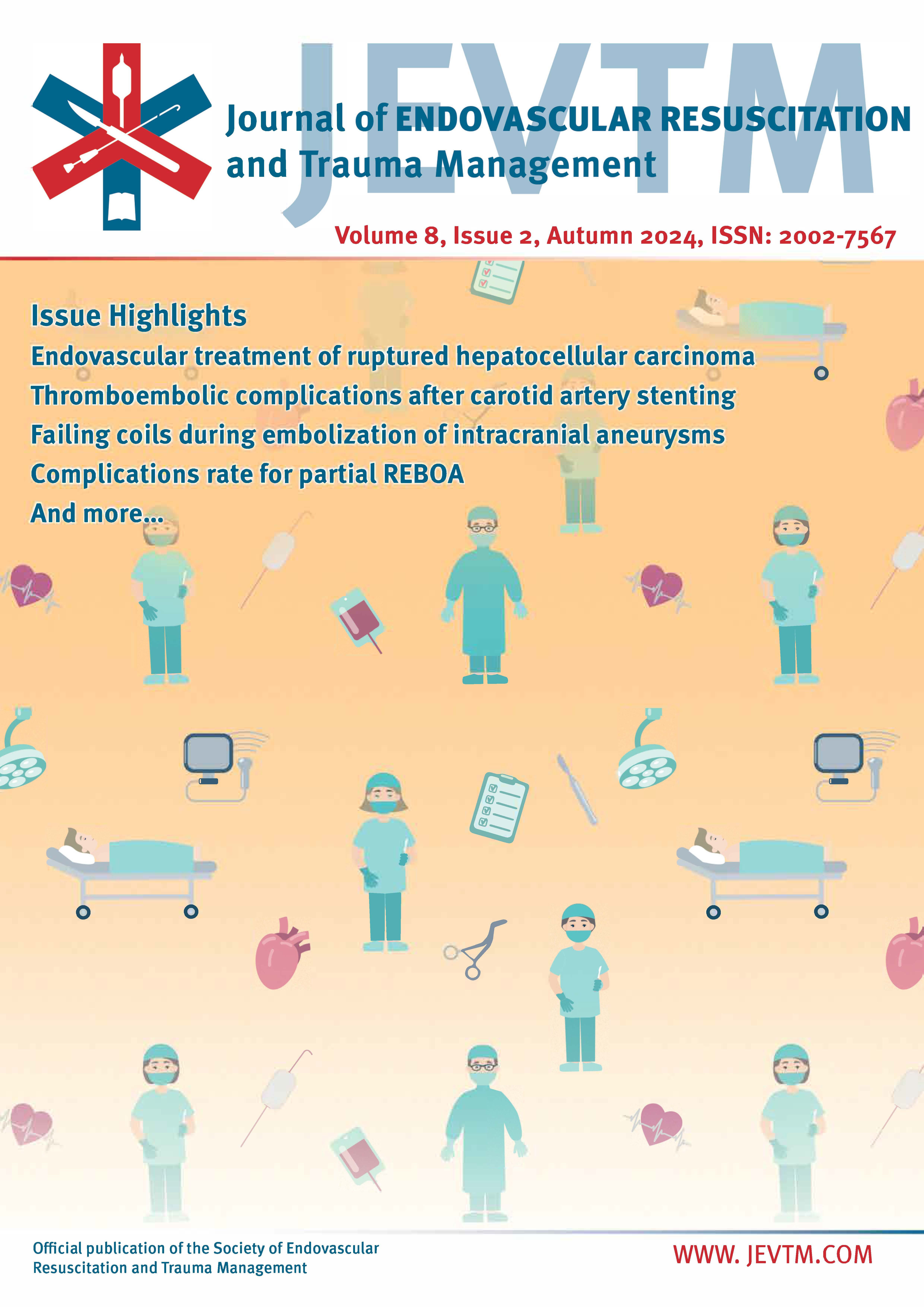The Fog has not Lifted: No Reduction in Complications for Partial REBOA in the AAST AORTA Registry
DOI:
https://doi.org/10.26676/jevtm.25486Keywords:
Resuscitative Endovascular Balloon Occlusion of the AORTA (REBOA), Partial REBOA (pREBOA), Complete REBOA (cREBOA), Hemorrhagic Shock, Resuscitation AdjunctAbstract
Background: Resuscitative Endovascular Balloon Occlusion of the Aorta (REBOA) is a potentially lifesaving but polarizing therapy due to the associated morbidity and uncertainty of who might benefit. Techniques such as partial (p)REBOA that provide hemodynamic support while reducing distal ischemia are now captured in the Aortic Resuscitation in Trauma and Acute Care (AORTA) registry. We hypothesized that pREBOA would be associated with improved mortality and fewer adverse outcomes.
Methods: The AORTA registry was queried for adult patients who received complete (c)REBOA or pREBOA between 2020 and 2022. Patients were excluded if they had a head Abbreviated Injury Scale (AIS) ≥three or an AIS of six in any body region. Outcome measures were complications and mortality. Poisson regression analyses identified the independent effect of the type of approach on outcomes.
Results: 164 patients met the inclusion criteria, with pREBOA used in 36% of cases and no significant difference in patient demographics, injury characteristics, or injury severity between pREBOA and cREBOA. There was no difference in mortality rate (44.1% vs 45.7%). After adjusting for potential confounders, no statistically significant difference in complications was detected between the two approaches [adjusted IRR (95% CI): 1.11 (0.54–2.27), p = 0.777]. This association persisted after subgroup analysis of aortic Zone one vs Zone three deployment.
Conclusions: In this registry analysis, pREBOA did not reduce morbidity or mortality compared to cREBOA. Improving the granularity of clinical metrics in the AORTA registry is essential to understanding whether patients will benefit from pREBOA, and how to best implement this controversial resuscitation adjunct.
Published
How to Cite
Issue
Section
License
Copyright (c) 2024 Micaela Gomez, Elizabeth Wood, Juhi Saxena, Lucas P Neff, Maximillian Peter Forssten, Austin Johnson, Timothy K Williams, Marcelo Ribeiro Jr, Bellal Joseph, Joseph DuBose, Shahin Mohseni

This work is licensed under a Creative Commons Attribution 4.0 International License.
Authors of content published in the JEVTM retain the copyright to their works.
Articles in the JEVTM are published under the terms of a Creative Commons CC BY 4.0 license, which permits use, downloading, distribution, linking to and reproduction in any medium, provided the original work is properly cited.




